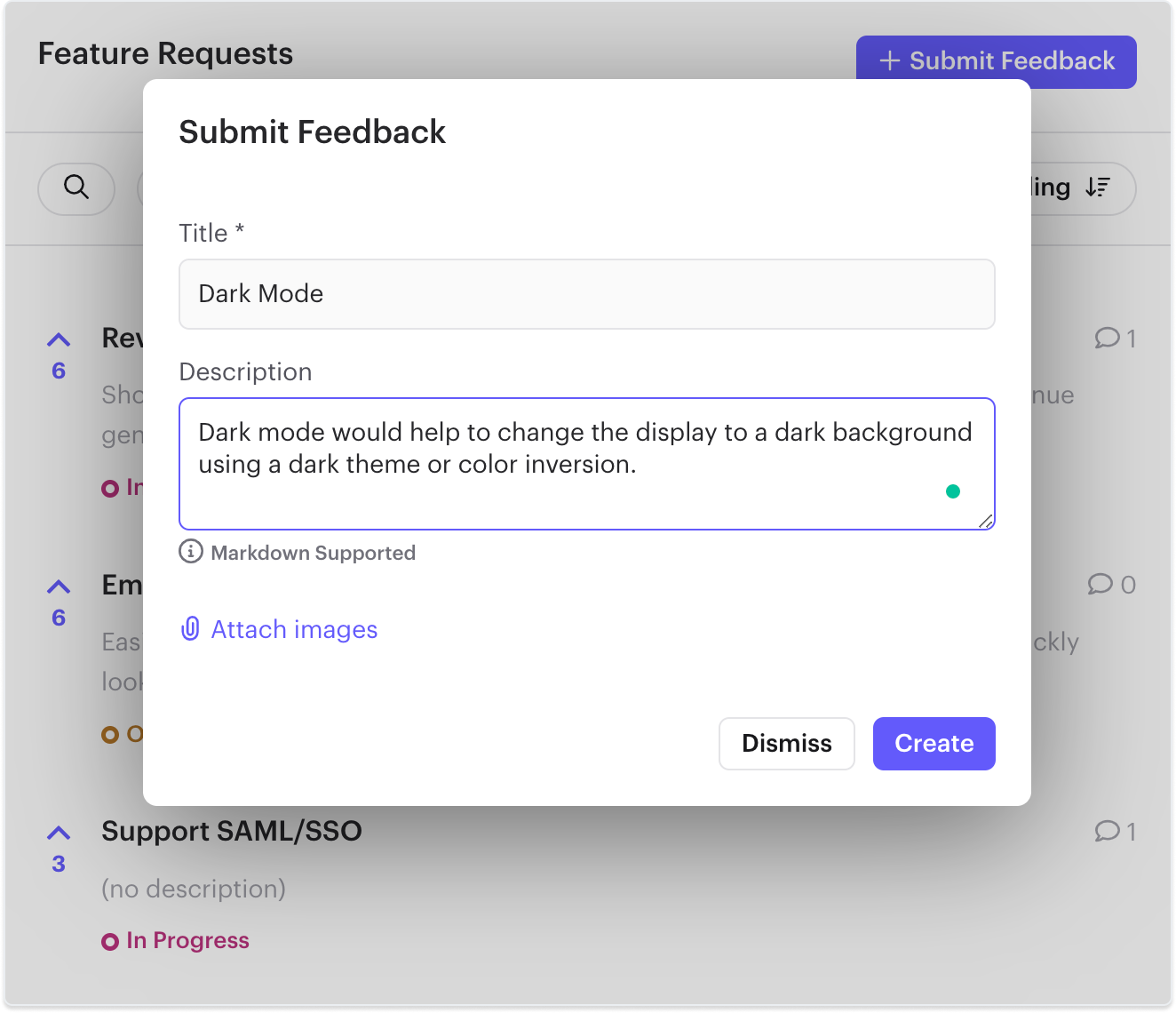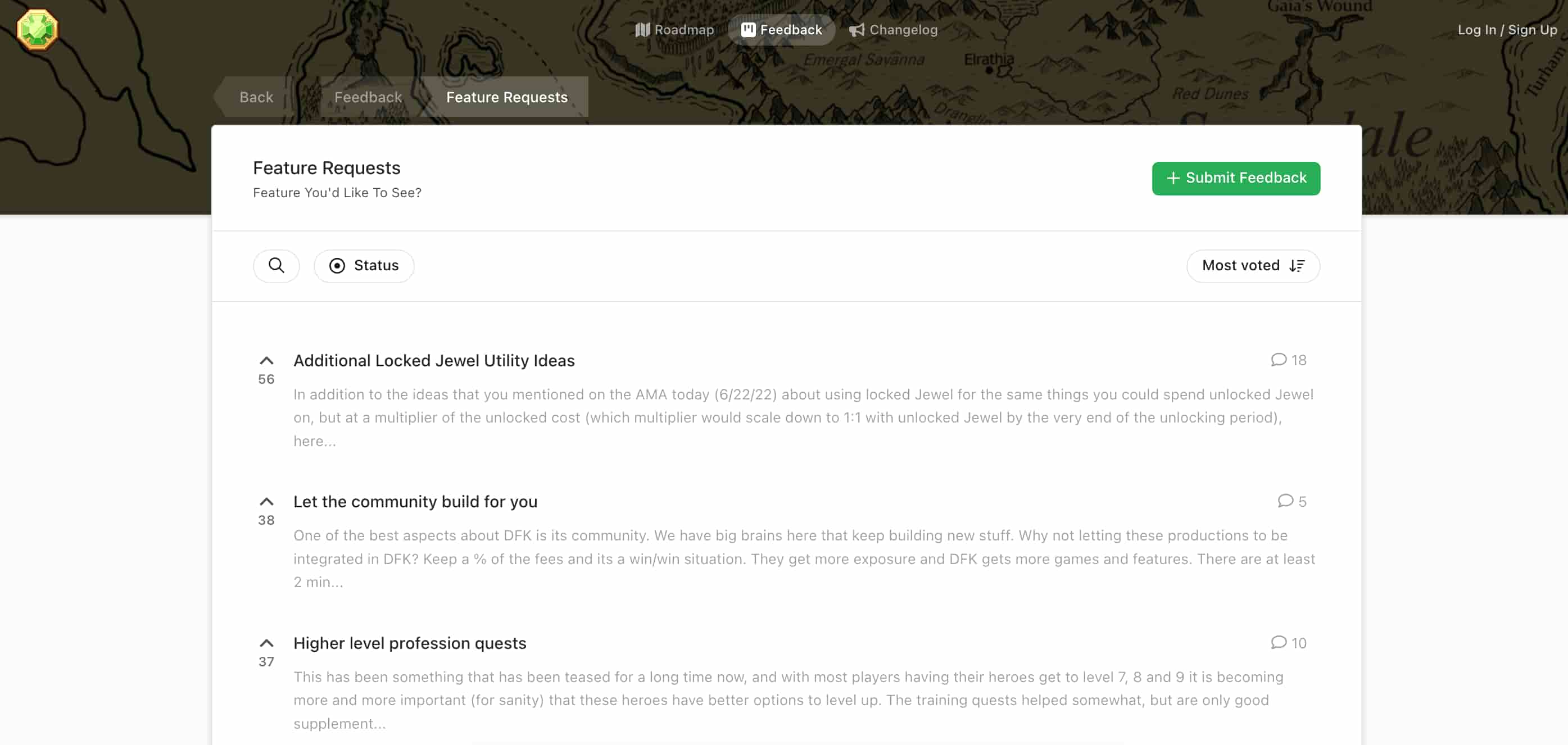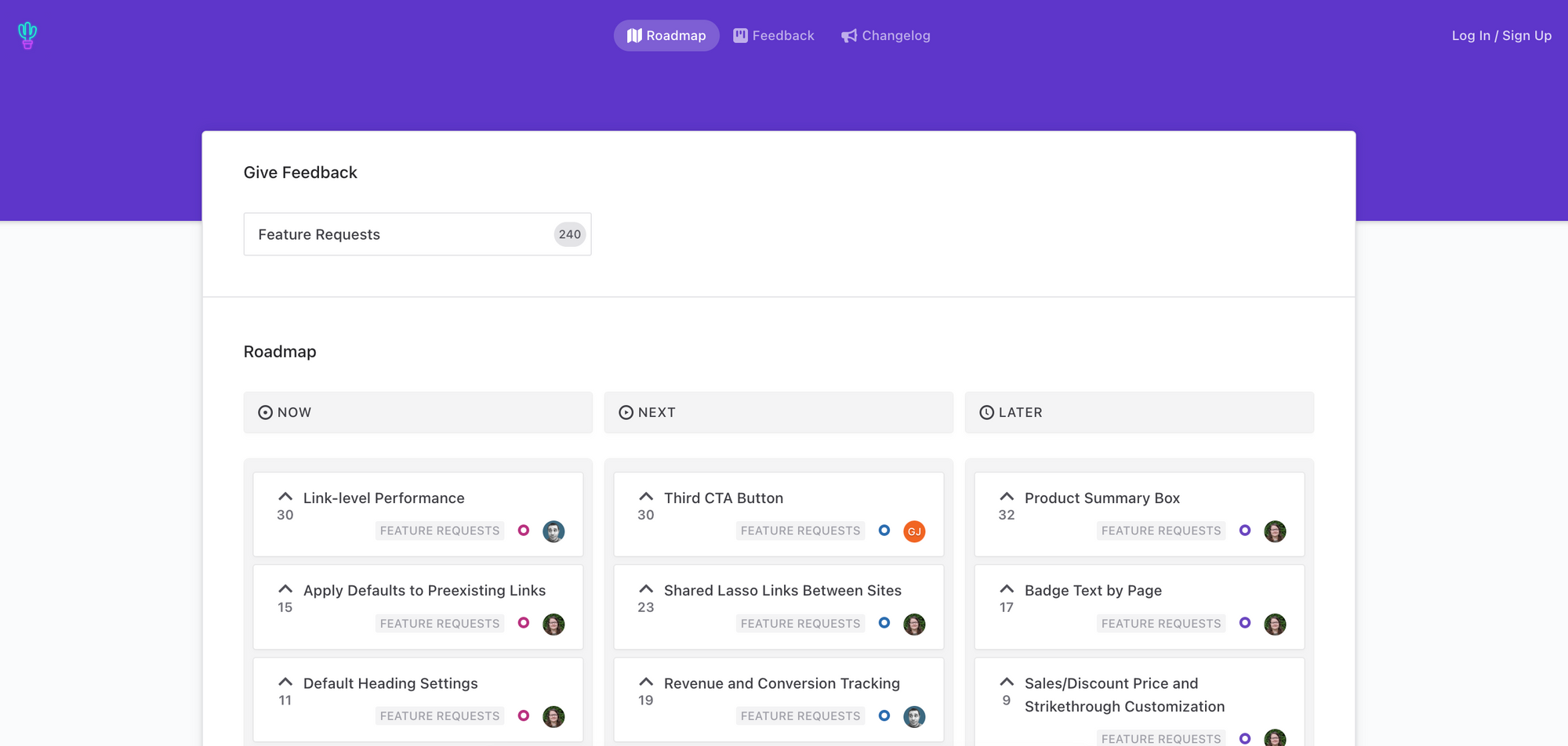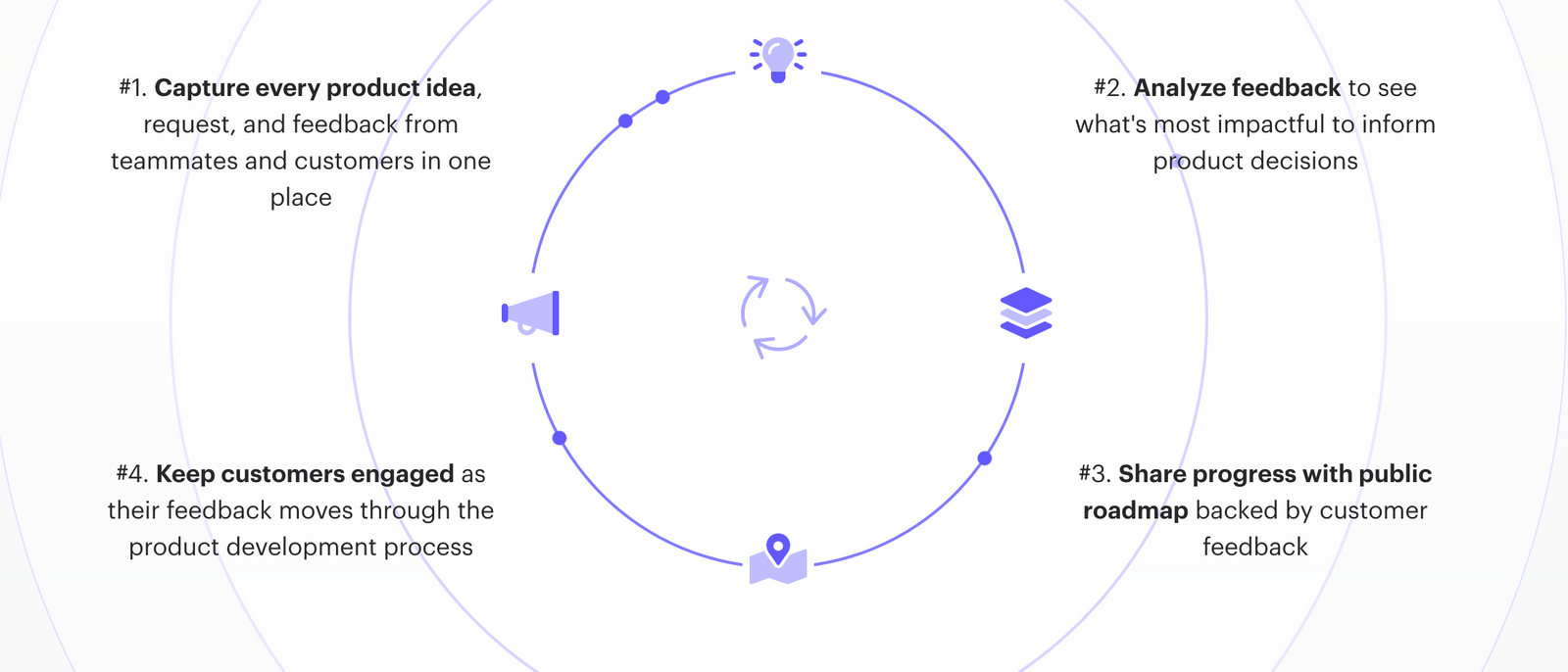
How to Validate Product Ideas with Customer Feedback
What does it take to create a successful product? Ask any founder, and they’ll tell you it's the customers.
A Global CX study by Oracle found that 74% of senior executives believe that customer experience impacts the willingness of a customer to be a loyal advocate.
Brands must maintain a seamless customer experience, but retaining a positive and productive feedback loop can be a mystery. Apart from customer feedback, market research, competitive analysis, and internal expertise should also be considered when validating product ideas.
The key is to listen to customer feedback, analyze it, and use it to make data-driven decisions in your product development process. That will help you improve and develop a product that meets the customers' needs.
Why is it important to validate product ideas?
It is important to validate product ideas because it helps to determine the potential market demand for the product idea and assess whether it will be a viable solution for customers. Validating product ideas is essential for any business to reduce risk and make informed decisions about which ideas to invest in.
Major benefits of validating product ideas and features before development include:
- Businesses can identify potential challenges, reduce the risk of failure, and increase the chances of success by validating product ideas.
- Validation can also help refine the product concept, ensure that it meets customer needs, and increase customer satisfaction.
- It allows businesses to gather feedback from potential customers and make necessary adjustments before launching the product, which can save time and resources in the long run.
- It also helps avoid costly mistakes and make more informed decisions about product development, marketing, and distribution strategies.
- It helps increase the chances of creating successful products that meet customer needs and generate a positive return on investment.
How to validate product ideas with customer feedback?
This blog will walk you through the seven steps to using customer feedback to validate your product ideas.
1. Identify Your Product Concept
The concept of your product is the backbone you build your business around, so getting this right is non-negotiable. Your objective with this first step is to identify and prioritize your goals aligned with your product strategy.
A popular way SaaS companies do this is by creating product-centric mind maps to define the feasibility of an idea. Ask questions that read:
- What are the key features required in your product?
- What customer problems are you trying to solve?
- What would make your product unique and differentiated from existing solutions?
- How will this product continue to generate revenue as you scale in the future?
This way, your internal teams know exactly what you hope to accomplish with the product, and this clarity helps everyone work toward prioritizing the same goals. Successful companies like Spotify and Canva drive product-led growth using customer feedback at the root of their research.
The next business-critical step is to lay out your value proposition. Your product’s Unique Selling Point(USP) depends on the landscape of your brand, the competitors, and the industry, and it gives you a bird’s eye view to avoid making mistakes that derail you from your goals.
The jobs to be done theory states that customers "hire" products to get "jobs" done rather than purchasing them. This helps you understand your business value proposition and what your customers need. It also helps to reframe your product’s features into customer benefits to create an irresistible marketing offer and effectively set yourself up for success from day one.
2. Conduct Market Research
By conducting market research, businesses can understand consumer preferences, competitive landscape, pricing trends, and user insights to make informed decisions about their product ideas.
Save time and money by avoiding costly mistakes due to a lack of information and identifying potential risks associated with launching a new product or entering a new market. Market research also provides valuable data that can be used to create marketing strategies and develop effective products that meet customer needs.
1. Target Market: User interviews, focus groups, and audience surveys are all ways to determine your potential customers in as much detail as possible. Their persona, including demographic, hobbies, and purchasing patterns, can help you create a failproof marketing strategy.
2. Customer Needs: Knowing your current and potential future customers go beyond getting them to make one purchase. By understanding and managing your customers’ lifestyle practices, you can increase customer retention rates and carve out loyal followers in the market.

3. Customer Pain Points: To capture the market, you need to know exactly what problems customers are facing and how your product can directly help solve them. When aligned with your business strategy, their pain points can transform into your best-selling business strategy and help you successfully break into a competitive industry.
3. Gather Feedback During the Ideation Phase
One of the best things you can do for your product is to involve your customers while you are still in the ideation phase. You likely have many different ideas before you finalize which version of your product idea to develop. This is where customer feedback can help make the next step much more effective and efficient.
- By gathering feedback early in the process, companies can ensure that their product is well-suited for customer needs. This will result in increased customer satisfaction and better sales results after launch.
- Early adopter feedback will also help drive product adoption for your product, acquire new customers, retain and upsell existing customers, and witness an overall increment in your profits immediately.
- Gathering feedback will help them identify problems before they become costly mistakes in the later stages of development. See how successful companies use customer feedback to their advantage.
See how Kingdom Studios uses Rapidr to provide a public product feedback page and accept user feedback. The feedback portal allows their customers to contribute to the ideation and produces improvement phases, improving customer engagement and loyalty.

Once ideation is complete, build and test prototypes of the most viable product ideas and concepts without doubting your customer acceptance rate.
4. Build & Test Prototypes with Users
Prototyping is typically done in iterations, with every new version tested for quality and feasibility. While there are many ways to do this, one of the most productive testing strategies is to bring real customers behind the scenes with you.
You aim to test for usability and validate product ideas before the launch. At every major iteration, getting customer feedback can quickly help you dissect what’s working and not. You can maximize your product's value, mitigate failure risks, and outperform competitors by incorporating customer feedback in product development.
How to test prototypes with users? Use a Proof of Concept( POC) model to test your product’s technical feasibility in real-world settings. It relies on undeniable evidence that convinces your stakeholders to allocate resources, your team to pursue the concept, and your customers to invest in the end product.
Before you create a working model of your product, a POC model can help you test your theories to determine small tweaks you can make to distinct features or problems and come up with feasible solutions.
5. Use an MVP Approach
While prototyping and the MVP approach can look similar, the two follow a chronological order. The MVP or minimum viable product approach is the bridge you build between your prototype and your first customers.
Eric Ries, author of The Lean Startup explains the MVP methodology and the importance of customer feedback for a product's success. Maximizing the learning per dollar you spend, the MVP approach helps you bring relevant feedback from your early adopters.
So, instead of being stuck with a lot of unstructured comments for the sake of product validation, you can create a focus group and user feedback tools like Rapidr to quickly collect valuable customer inputs and turn them into a product roadmap that tests for viability automatically.
Release the MVP for early access or a beta version and build an email list with early adopters so you can communicate and build with them directly. Your email list, equipped with early access benefits for early adopters, would help potential customers bounce ideas, create a buzz around your product, and ultimately lead to a successful product launch.
6. Monitor Customer Feedback After Launch
Once you launch your product, your relationship with the customers doesn’t cease. Opening up your idea to the scrutiny of the wider public is the best way for you to understand what they want from you.
As your product is used, compared, and tested by real customers, you can discuss potential issues, identify and fix bugs, collect different types of user feedback, and look for future growth opportunities. See how Lasso makes it easy to manage links, create product displays, collect feature requests, and maintain a public product roadmap with the help of Rapidr.

Customer experience plays a central role in SaaS growth, and we recently wrote about customer feedback strategies you can use to increase engagement, retention, and revenue. From feature requests to customer satisfaction ratings, your job becomes easier when you involve your product’s users in the creative and decision-making processes.
7. Incorporate Customer Feedback in the Product Development Process
As you set out to build a product, you will inevitably utilize one or more of the steps outlined in the agile development process. A vital aid in every product manager’s toolkit, the agile development model is a customer-centric way of developing a product.
So, instead of looking at the entire development process as one long marathon, you break it down into smaller, more manageable sprints. Each sprint tackles one task and allows customers to react to every change so you never derail from your end goal.
With this methodology, you build trust through transparency and create a bond with your customers before your product even hits the market. Here is an inspiring list of public product roadmaps that SaaS companies have used to become super successful.
Customer feedback helps you curate each sprint to be as effective as possible, making each iteration of your product increasingly failproof and ensuring that your customer experience remains seamless by closing the feedback loop.

Your end product has to integrate itself within your customer's lifestyles without them needing to make alterations. Incorporating their feedback throughout development lets you test this desirability without wasting precious time and resources.
Conclusion
Customer feedback is unavoidable, so instead of waiting till the launch to collect the feedback and reviews and potentially risk your brand’s reputation, think of it as an asset that you can weave into the development process to tilt the odds in your favor.
With Rapidr, you won’t have to worry about missing out on customer feedback. It helps SaaS companies set up a dedicated place to track different types of customer feedback, understand what customers need, and prioritize what to build next. Sign up to build better products with the power of customer feedback today.

